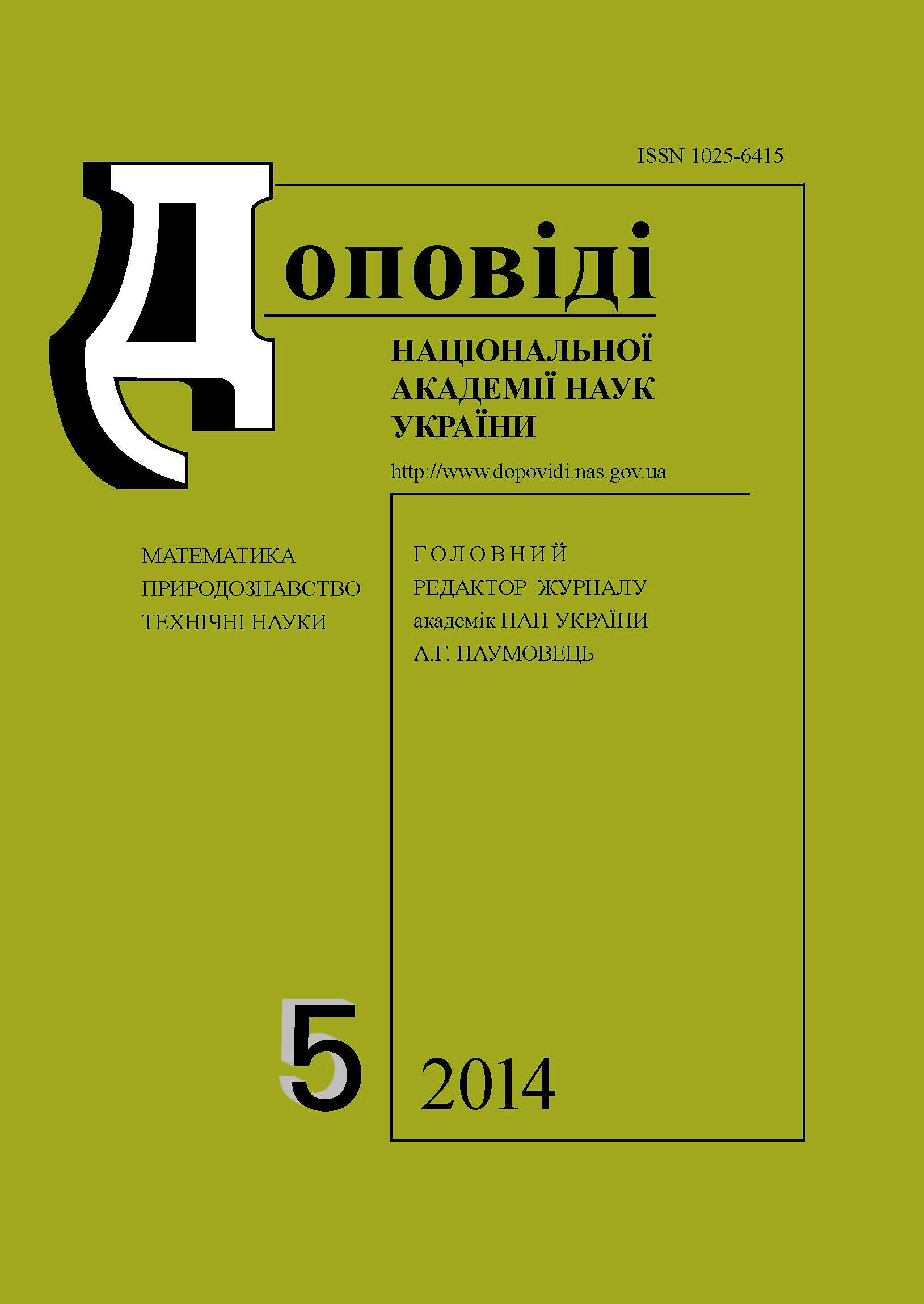Peculiarities of the development of hydrogels based on chitosan and poly(ethylene glycol) disuccinate at elevated temperature
DOI:
https://doi.org/10.15407/dopovidi2014.05.128Keywords:
chitosan, elevated temperature, hydrogelsAbstract
The reaction of poly(ethylene glycol) disuccinates and 1-O-benzyl-2-amino-2-deoxy-D-glucopyranoside (1-benzylglucosamine), which resembles a repeating unit in a chitosan macromolecule, has been studied at an elevated temperature without additional activating agents and catalysts. The obtained results indicate that the interaction between the amino groups of 1-benzylglucosamine and the carboxylic groups of poly(ethylene glycol) disuccinates has led to the formation of covalent amide bonds. Simultaneously, the aminolysis reaction occurs as a result of the interaction between the ester groups of poly(ethylene glycol) disuccinates and the amino groups of chitosan, forming intermolecular amide bonds as well. New covalently cross-linked biocompatible hydrogels based on chitosan and poly(ethylene glycol) disuccinates have been synthesized. The polymeric scaffold of the hydrogels is formed through these reactions. The hydrogel properties (e. g., swelling, drug solubilization, and mechanical properties) could be controlled through the reagents concentration, as well as through the COOH/NH2 functional group ratio and the poly(ethylene glycol) chain length.
Downloads
References
Muzzarelli R. Natural chelating polymers. Oxford: Pergamon Press, 1973: 144–176.
Yao K., Li J., Yao F., Yin Y. Chitosan-based hydrogels. Functions and applications. Boca Raton: CRC Press, 2012.
Peniche C., Argüelles-Monal W., Peniche H., Acosta N. Macromol. Biosci., 2003, 3: 511–520. https://doi.org/10.1002/mabi.200300019
Bhattarai N., Li Z. S., Gunn J. et al. Adv. Mater., 2009, 21: 2792–2797. https://doi.org/10.1002/adma.200802513
Hu Y., Du Y., Yang J. et al. Polymer., 2007, 48: 3098–3106. https://doi.org/10.1016/j.polymer.2007.03.063
Hu F.-Q., Meng P., Dai Y.-Q. et al. Eur. J. Pharm. Biopharm., 2008, 70: 749–757. https://doi.org/10.1016/j.ejpb.2008.06.015
Bian F., Jia L., Yu W., Liu M. Carbohydr. Polym., 2009, 76: 454–459. https://doi.org/10.1016/j.carbpol.2008.11.008
Kirschner C. V., Anseth K. S. Acta Materialia, 2013, 61: 931–944. https://doi.org/10.1016/j.actamat.2012.10.037
Lee K. Y., Mooney D. J. Chem. Rev., 2001, 101: 1869–1879. https://doi.org/10.1021/cr000108x
Chen S.-H., Tsao C.-T., Chang C.-H. et al. Macromol. Mater. Eng., 2013, 298.: 429– 438. https://doi.org/10.1002/mame.201200054
Mi F.-L., Kuan C.-Y., Shyu S.-S. et al. Biomaterials, 2000, 41: 389–396.
Gupta K. C., Jabrail F. H. Carbohydr. Res., 2006, 341: 744–756. https://doi.org/10.1016/j.carres.2006.02.003
Welsh E. R., Price R. R. Biomacromolecules, 2003, 4: 1357–1361. https://doi.org/10.1021/bm034111c
Downloads
Published
How to Cite
Issue
Section
License
Copyright (c) 2025 Reports of the National Academy of Sciences of Ukraine

This work is licensed under a Creative Commons Attribution-NonCommercial 4.0 International License.



